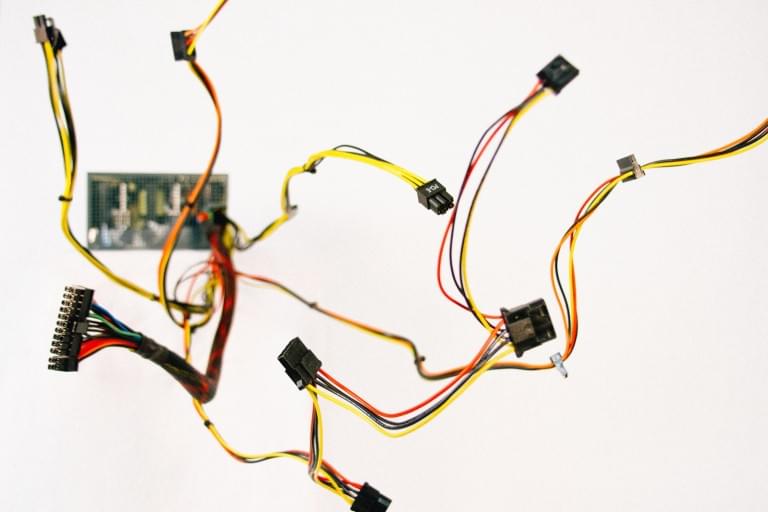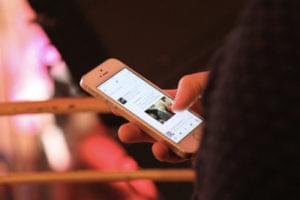To consider how far the Internet of Things (IoT) could take us, consider the example of comic book superhero Tony Stark (aka Iron Man) and his virtual assistant, JARVIS, an artificial intelligence.
The name JARVIS is an acronym for “Just A Rather Very Intelligent System,” but is also an obvious hat tip to the idea of a human butler. JARVIS takes care of all the things a butler would — he runs Tony’s home, keeps an eye on his master’s health, and helps him with administrative tasks.
But JARVIS can do much more than merely dim the lights at Tony’s command. He also controls his car and computers. JARVIS is like Siri on steroids, able to fulfill nearly any request once asked.
Each year, IoT gets a little closer to JARVIS-level intelligence in real life. We’re excited about smart home gadgets like the very tech-savvy Samsung Family Hub Refrigerator, as well as personal trainer substitutes like the HOIST fitness machines.
What will happen with this technology next year? In the next 10 years? To date, most of the buzz around IoT has concentrated on technology in the home. But will other spaces start to see the impact of IoT, too? How much is the phenomenon predicted to grow?
Here’s what you need to know about where IoT might be headed.
IoT Will Receive a Lot More Money
Corporations are starting to view IoT as a new revenue stream. Worldwide, Verizon predicts IoT-related spending will grow from 1 trillion in 2019. One projection puts the number of IoT devices at 21 billion by 2020. The world population is projected to be around 8 billion in 2020, meaning there will be an anticipated two to three IoT devices for every person on the planet in four years.
IoT Devices Will Get Cheaper, Making Older Tech Obsolete
As more money gets funneled into IoT, the production of the technology will only get better and more efficient, making IoT devices cheaper and more widely available. And as the cost goes down, you can expect demand to grow.
Consider what will happen to the rest of our tech when more consumers adopt these affordable IoT devices. How many people still have the type of flip phone that dominated before smartphones? Not many. Similarly, as IoT expands, it seems likely that demand for devices that aren’t part of IoT will decrease.
IoT Applications Will Spread Far and Wide
Applications of IoT will be seen in many industries in 2017, particularly energy, agriculture, transportation, city planning, healthcare, and home monitoring in addition to continued growth in consumer goods. The possibilities are truly endless.
Can’t find the motivation to attend that event downtown because you know there won’t be parking? You’ll have to come up with a different excuse when you can reserve a public parking space through your car’s dashboard.
Do you have to head to your elderly parent or grandparent’s house several times a day to make sure he or she takes the right medication? In the future, your visits can be less about care-taking and more about spending time together thanks to granny’s smart medication dispenser in her kitchen.
Manufacturers & Service Providers Will Focus More on Security
In 2017, IoT manufacturers and service providers plan to take IoT security more seriously — and for good reason. IoT vulnerabilities have had some serious consequences. In October, a denial-of-service (DoS) attack was launched against the servers of internet giant Dynamic Network Services (Dyn). The attacked exploited vulnerabilities in IoT devices, including webcams and routers, and succeeded in shutting down more than 1,200 websites, including Airbnb, Etsy, the National Hockey League, and many newspapers.
Thanks to this and similar events, IoT manufacturers and service providers are scared. No company wants to make headlines for a product with a security hole that led to a mass data breach, or worse. Whether it’s fear guiding the future security of IoT or simple concern for consumers’ safety, you can expect future IoT products to have enhanced protection.
The Government Will Get More Involved
After October’s Dyn attack, the US Department of Homeland Security (DHS) released guidelines for IoT security and transparency — marking the first move in a long journey ahead. The 17-page document, entitled Strategic Principles for Securing the Internet of Things (IoT) makes it plain: IoT “…has not kept up with the rapid pace of innovation and deployment, creating substantial safety and economic risks.”
The DHS has laid out non-binding principles and suggested best practices to ensure a responsible level of security for IoT devices. This is only the beginning. Since cybersecurity is an important national issue and IoT devices currently pose a large security threat, you can bet your bottom dollar the US government will continue to get involved.
Security aside, IoT will continue to make waves in nearly every area of our society. Take a look at the example below of IoT’s influence on the future of agriculture.
Agriculture: A Case Study in How IoT Could Change Everything
If you’ve stepped into a grocery store in the last five years, you will have noticed more and more organic food. In fact, organic food sales in the U.S. hit a record $43.3 billion in 2015. This is a result of increased consumer demand; the Department of Agriculture says the market for organic food continues to see double-digit growth.
Organic standards can be very strict. The kinds of pesticides and antibiotics farmers can use are closely regulated. This presents a dilemma when trying to keep weeds in check — if not pesticides, then what?
One solution is killer robots. Bosch has developed a robot that stamps down weeds at a rate of two per second, successfully removing 90% of those pesky plants.
Another option scientists are exploring is the use of pheromones to disrupt the mating patterns of insects harmful to crops. Wireless sensor networks could monitor crops for insects and activate a pheromone delivery system when they detect high levels of bugs.
There’s no question: IoT is set to revolutionize your work and home life, no matter what industry you’re in or where you live. Like self-driving cars, it’s a matter of when IoT devices will reach every consumer and business, not if.
Contributed By: Hunter Jensen is the Founder and CEO of Barefoot Solutions, an innovative digital agency headquartered in San Diego, CA. Barefoot Solutions specializes in web and mobile design and development, including web, iOS, Android, IoT, AppleTV, Apple Watch, and more. Having worked in technology for more than 19 years, Hunter’s experience covers the entire lifecycle of product design and development, as well as all other facets of running a digital agency, including business development and fundraising. Hunter’s comprehensive technical knowledge combined with his natural creativity enable him to meet his client’s needs with industry-leading digital solutions.
 Hunter Jensen
Hunter JensenHere's his bio: Hunter Jensen is the Founder and CEO of Barefoot Solutions, an innovative digital agency headquartered in San Diego, CA. Barefoot Solutions specializes in web and mobile design and development, including web, iOS, Android, IoT, AppleTV, Apple Watch, and more. Having worked in technology for more than 19 years, Hunter's experience covers the entire lifecycle of product design and development, as well as all other facets of running a digital agency, including business development and fundraising. Hunter's comprehensive technical knowledge combined with his natural creativity enable him to meet his client's needs with industry-leading digital solutions.





